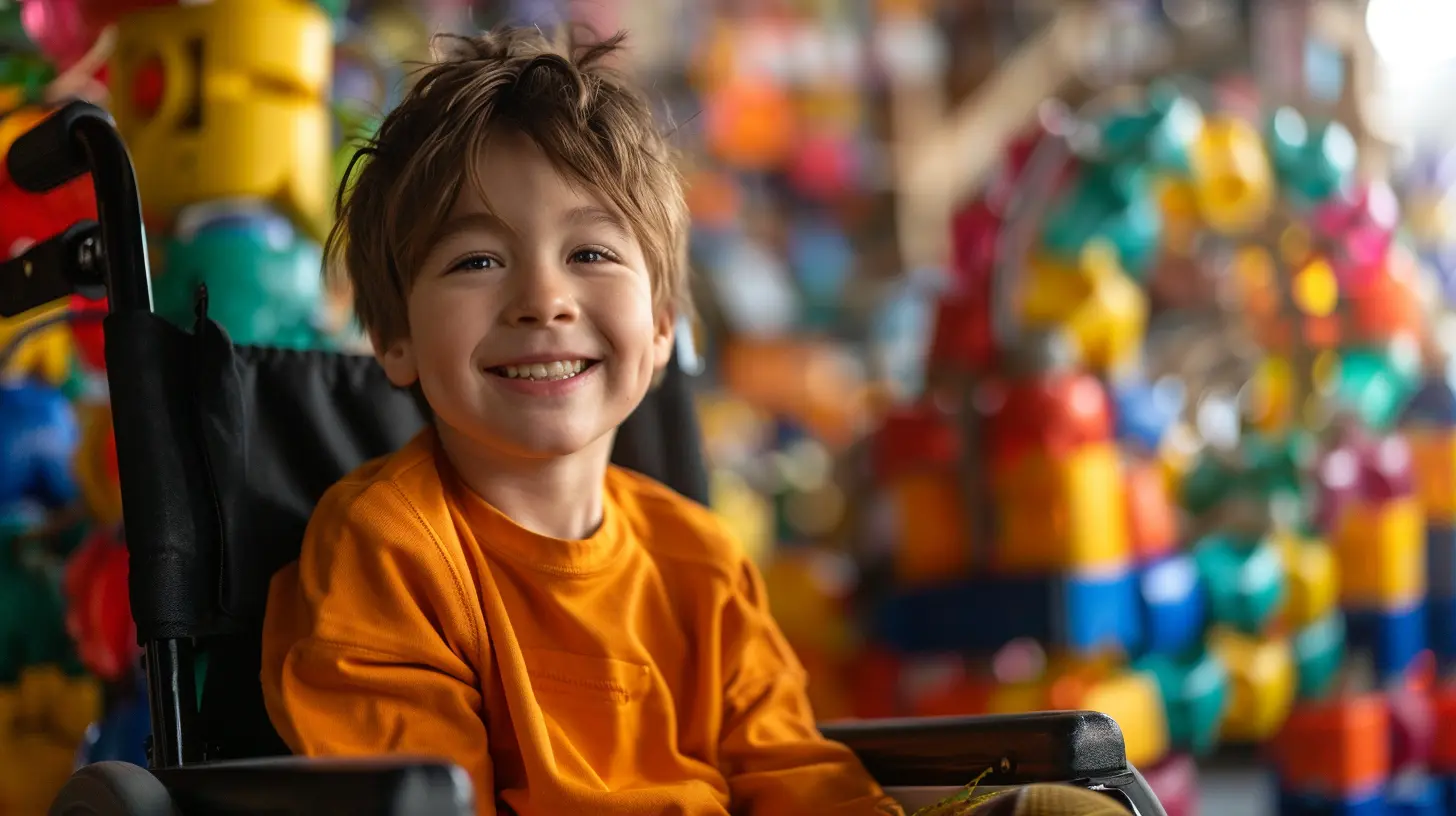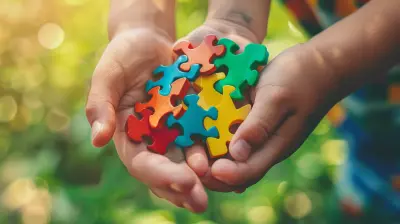Fostering a Growth Mindset in Children with Special Needs
30 September 2025
We all want the best for our kids, right? Whether you're a parent, guardian, teacher, or caregiver, watching a child thrive is one of life’s greatest joys. However, when you're raising or working with a child who has special needs, the journey often comes with unique challenges. But here’s the good news—challenges don’t have to be roadblocks. In fact, they can be stepping stones.
One powerful tool that can make a world of difference? A growth mindset.
Let’s dive into how fostering a growth mindset in children with special needs can help them reach their full potential. We’ll look at practical tips, real-world examples, and mindset-shifting strategies that make this journey not only manageable but honestly, pretty amazing.

What is a Growth Mindset Anyway?
Before we go too far, let’s break this down. A "growth mindset" is the belief that abilities and intelligence can develop with effort, learning, and persistence. It’s the opposite of a fixed mindset, where people believe talents are set in stone—either you have it or you don’t.The term was popularized by psychologist Carol Dweck, and it's become a bit of a buzzword. But it's not just a trend; it's a game-changer, especially for kids who might already feel like they’re starting from behind.

Why Growth Mindset Matters for Kids with Special Needs
Now, let’s talk specifics. Why is this mindset shift critical for children with autism, ADHD, learning disabilities, or other special needs?These kids often receive messages—sometimes directly, sometimes subtly—that they’re “different” or “not good enough.” Over time, this can chip away at their confidence. When things don’t come easily, they may begin to believe that they’ll never be good at certain things.
That’s where a growth mindset flips the narrative. Instead of saying, “I can’t do this,” it becomes, “I can’t do this yet." That tiny word—yet—carries a whole lot of hope.

The Real-Life Impact of a Growth Mindset
Let’s paint a little picture here.Imagine a child with dyslexia. Reading isn’t just hard—it’s exhausting. Every word feels like a puzzle. But with a growth mindset, this child doesn’t see difficulties as dead ends. Instead, they think, “This is tough, but my brain can grow. I can get better.”
That shift in self-talk changes everything. It boosts resilience. Builds confidence. And most importantly? It helps a child become their own biggest cheerleader.

Recognizing the Strengths Your Child Already Has
First up—before we dive into strategies, let’s take a moment to appreciate the strengths that kids with special needs bring to the table.They’re often:
- Incredibly observant
- Compassionate and sensitive
- Persistent (even if it doesn’t always look like it)
- Creative problem-solvers
Remember, a growth mindset doesn't start with fixing a weakness. It starts by recognizing and building on what’s already strong.
How to Encourage a Growth Mindset in Special Needs Kids
So, how can you actually nurture a growth mindset? Let’s get into some hands-on, heart-centered strategies.1. Praise the Process, Not the Outcome
It’s so tempting to say, “You’re so smart!” when a child does something well. But here’s the catch—that kind of praise can make kids afraid to fail.Instead, try this:
- “I love how you kept trying, even when it got tricky.”
- “You made a great plan and stuck with it!”
- “Your effort really paid off—look at that progress!”
By focusing on effort, problem-solving, and persistence, you’re reinforcing the idea that success comes from what they do, not just what they were ‘born with.’
2. Normalize Mistakes
Mistakes aren’t failures—they’re feedback.Encourage your child to see mistakes as part of the learning journey. You might say:
- “I make mistakes all the time. That’s how I learn.”
- “Oops! That didn’t work. What can we try next?”
You could even create a “Celebrate Mistakes” moment each week where your child (and you!) share a mistake and what you learned from it. Make it fun, even silly. Laughter is a powerful teacher.
3. Use “Yet” Powerfully
That magical three-letter word—yet—can totally reshape a child’s mindset.- “I can’t tie my shoes… yet.”
- “I don’t understand this math… yet.”
Post “yet” reminders around the house. Put one on the fridge. Add one to a mirror. Turn it into a household mantra.
4. Set Realistic, Challenging Goals
Growth mindset isn’t just about wishful thinking—it thrives on action.Help your child set short-term, achievable goals that push their limits a little. Maybe it’s reading one page of a book without help. Or staying on task for five extra minutes. Celebrate every tiny victory.
By helping a child see how small steps stack up, you show them their progress is real—and worth working for.
5. Be a Role Model
Your mindset rubs off more than you realize. So take a moment to reflect—how do you talk about your own challenges?If your child hears you say, “I’m terrible with technology,” or “I just can’t draw,” they absorb that.
Instead, try this:
- “I’m still learning how to use this video app—I'll get the hang of it.”
- “Drawing isn’t easy for me, but I’m practicing!”
Show them that growing is a lifelong thing—not just a school thing.
6. Teach About the Brain
Kids love knowing how things work—including their brains.Explain that the brain is like a muscle—it gets stronger the more you use it. Teach them about neuroplasticity (you don't have to use that word, of course!). Talk about how learning something new makes their brain build new pathways.
Some fun, age-appropriate books and videos do this beautifully if you want back-up!
7. Create a Safe Environment to Try and Fail
As adults, we sometimes rush in to protect kids from discomfort. But growth requires struggle.Rather than removing every obstacle, create a safe space where it’s okay to try and not immediately succeed. Stay calm when things don’t go well. Validate their frustration, but keep hope at the center.
“You’re frustrated—and that’s okay. This is hard, but I believe you can do it.”
That kind of emotional support is like magic.
8. Use Visuals and Stories That Inspire
Stories are powerful, especially for kids with special needs who may connect more to narrative than abstract ideas.Find books, shows, or videos featuring characters who overcome setbacks. Talk about how those characters kept going, kept learning, and eventually succeeded.
Bonus points if the characters are relatable or share similar experiences with your child.
The Role of Teachers and Therapists
This isn’t a solo journey. When teachers, therapists, and other caregivers embrace and reinforce growth mindset principles, the impact multiplies.Collaborate as a team. Share what’s working. Use consistent language across environments.
The message? This child is capable. Their future is still unfolding.
What If It Doesn’t Stick Right Away?
Here’s where we have to channel our own growth mindset.Not every strategy works for every kid—especially the first time. That’s normal. Kids with special needs may need more reinforcement or adaptations to truly internalize a growth mindset.
Stick with it. Adjust as needed. Celebrate progress, not perfection.
The goal isn’t to have a “perfectly positive” child—it’s to help them feel empowered to keep going, no matter how tough the path gets.
A Note to Parents (Yes, You!)
Let’s be real—this is hard work. Watching your child struggle can feel like a punch to the gut. But you showing up, learning, and adapting? That’s huge.Give yourself grace. Give yourself credit. And remember—you’re growing right alongside your child.
Let your child see you learning and stretching. Let them witness your own growth mindset in action. That may be the most powerful lesson of all.
Final Thoughts: Little Mindset, Big Impact
Helping a child with special needs develop a growth mindset isn’t about sugar-coating reality. It’s about equipping them with the mental tools to face that reality—and shape something amazing from it.It’s saying: You’re not limited. You’re not stuck. You’re still becoming.
And really, isn’t that what growing up is all about?
all images in this post were generated using AI tools
Category:
Special NeedsAuthor:

Steven McLain
Discussion
rate this article
1 comments
Giovanna McNeil
Empower resilience by celebrating small achievements daily.
October 6, 2025 at 2:37 AM

Steven McLain
Absolutely! Celebrating small achievements boosts confidence and reinforces a growth mindset, helping children with special needs thrive.


